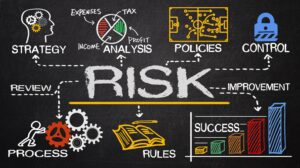I. Introduction
- As a CEO or senior executive, you have a lot on your plate. But when it comes to prioritizing what is most important for your company, employees, and shareholders, risk management is consistently a top concern.
- In this article, we’ll provide a comprehensive guide to enterprise risk management, helping you navigate the complex landscape of identifying, assessing, and managing potential threats to your business, ultimately emerging stronger and more resilient.
II. Identifying Risks
- Identifying risks is an essential first step in the risk management process for modern businesses. Risks can come in many forms, including financial, operational, compliance, strategic, and reputational.
- Brainstorming, SWOT analysis, and scenario analysis are effective techniques for identifying risks. By thoroughly identifying all types of risks, businesses can better understand their potential impacts and prioritize them for further assessment.
III. Assessing Risks
- Once risks have been identified, organizations need to assess them to determine their likelihood and impact. This will help businesses prioritize risks and develop appropriate strategies for managing them.
- Probability analysis and impact assessment are key techniques for assessing risks. The Bow-Tie method can also be useful for analyzing, reporting, and communicating potential risks, actual incidents, and near-misses.
IV. Managing Risks
- Developing strategies for managing risks is the next step after identifying and assessing them. This can involve minimizing their impact, avoiding them altogether, or transferring them to a third party.
- Risk management plans should be flexible and reviewed regularly to ensure they are still effective as the business and its environment changes.
- Business Continuity Plan (BCP) and disaster recovery plans (DRP) should be also put in place in order to minimize the impact of any risks that cannot be avoided or transferred.

V. Conclusion
- Implementing an effective enterprise risk management process can help businesses of all sizes identify, assess, and manage potential threats, ultimately emerging stronger and more resilient.
- By understanding risks, businesses can prioritize them, develop strategies to manage them, and improve overall performance.

#RiskManagement #EnterpriseRiskManagement #BusinessManagement #MitigationStrategies #Resilience #BusinessContinuityPlan

